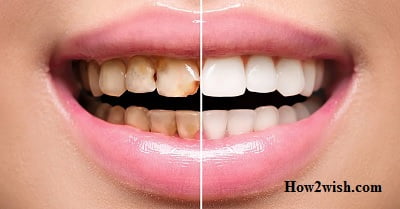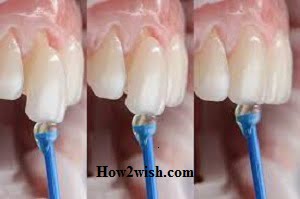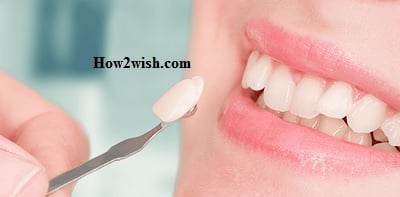Defects that appear on the vestibular (front) surface of the elements of the jaw row cause not only physical but also psychological discomfort. Changing the natural shade of the enamel, the formation of cracks and chips, the formation of chalky and dark spots – all these factors reduce aesthetics, increase the risk of morbidity and force the patient to be ashamed of his smile. In such situations, medical intervention is required. The choice of aesthetic restoration technique depends on the indications of the clinical picture – for example, in recent years, veneering has become an increasingly popular solution, which makes it possible to achieve the ideal shape and appearance of the frontal units. But before you seek the help of dentists, you should learn better – what are dental veneers, what models are there, how they are placed, and what they are for.

General view
From a technical point of view, veneering is a procedure in which thin ceramic linings are attached to the surface of the anterior elements of the dentition, covering the entire crown. They improve the appearance of incisors and canines, protect them from mechanical damage, and form an attractive “Hollywood” smile. The plates fixed on the enamel with the help of an adhesive composition belong to the category of micro prostheses, they mask defects and prevent the development of several dental diseases.
Dental veneers Classification by installation methods
Not all patients know what veneers are for teeth in dentistry, how they look and are attached, and what treatment options there are, so first you should familiarize yourself with the basic concepts. One of the criteria that allows differentiating the existing varieties is the technique used within the chosen aesthetic restoration protocol:
- Direct method – involves the manufacture of overlays directly in the oral cavity.
- Indirect prosthetics – the creation of plates in a dental laboratory.
There is also a third option – semi-direct models of a removable type, but they are not directly related to medicine. The structures formed as a result of the heat treatment of the composite composition are sold ready-made and are intended for short-term aesthetic enhancement – for example, for a one-time visit to an event where you need to look your best. The constant wearing of products of this type is contraindicated due to inconsistencies with anatomical parameters – they violate diction, and are characterized by low structural strength, which increases the risk of deformation under load and subsequent damage to the mucous tissue.
Classification by materials of manufacture
Another differentiating criterion determines not only the functional and aesthetic characteristics but also the cost of dental veneers.
Composite
The very first version, which, despite the development of technology, remains popular today, is due to three factors:
- Biological compatibility with oral tissues.
- Minimal complexity and high installation speed.
- Affordable price.
However, models of this type also have disadvantages:
- Vulnerability to the action of pigmenting dyes.
- Fragile structure subject to deformation.
- Thickness up to 1 mm, due to which the teeth may look unnatural.
In addition, to achieve the desired aesthetic result, a prerequisite is the preparation of tooth enamel. Removing the outer layer is an irreversible procedure, the consequences of which negatively affect the state of the supporting elements. The duration of operation of such prostheses is up to 5 years, then the veneers will either have to be replaced with new ones or removed along with the crown, installing an implant instead.
Ceramic
Ceramic overlays, also known as porcelain overlays, offer improved performance over the previous version. Benefits include:
- Resistant to food colorings and tobacco smoke.
- A variety of shades are available, similar to natural enamel.
- A stronger structure that can withstand a significant chewing load.
- No need for deep preparation – due to half the thickness.
- Long service life without loss of aesthetics – up to 10 years.
Of the minuses, one can only single out a higher cost, several times higher than the cost of installing composite models.
Zirconia
Zirconia has been used in dentistry for more than two decades and has shown excellent results in providing aesthetics and functionality to refurbished units. This means that such dental veneers are reliable overlays, comparable in strength to metal-ceramic, and characterized by several positive aspects of use:
- The minimum thickness of products – from 0.3 mm – provides a natural appearance.
- The antibacterial properties of the coating prevent the development of caries.
- Biocompatible material does not provoke an allergic reaction.
- The shade of the plates is selected individually using the Vita scale.
Zirconium micro prostheses are visually indistinguishable from natural enamel. The declared service life is up to 20 years. At the same time, it should be borne in mind that the production technology requires high qualifications and the availability of special equipment – this causes the cost of prosthetics, comparable to implantation.
Ultra-thin Lumineers
A development patented by the American company Cerinate, popular among politicians, actors and show business representatives. The thin structure and the tightest fit eliminate the need for grinding teeth – fixed with adhesive glue, the plates are securely held on the surface and retain an attractive appearance for more than 20 years.
Such products are suitable for people with increased enamel sensitivity and are distinguished by the accuracy achieved through digital modeling technology. Among the disadvantages are the high cost, as well as the long wait for installation associated with foreign production.

Ultraneers
Domestic analog, for the creation of which E Max ceramics, processed by a thermal method, is used. The thickness slightly exceeds the indicators of lumineers, which does not affect the appearance but allows you to partially reduce costs. Benefits include:
- Aesthetics of products.
- Possibility of installation on abnormally sensitive teeth.
- Optional enamel preparation.
- Strength and durability compared to conventional porcelain veneers.
- Shorter duration of prosthetics.
- The declared service life is from 10 years.
Prices for the manufacture of trainers are slightly lower than in the previous case, however, it must be borne in mind that in some situations, turning off the supporting elements may still be a necessary condition.
Nanoniers
Swiss technology is based on the use of ceramic material supplemented with nanoparticles. Formed prostheses are thin and natural in appearance, but may also require enamel preparation before fixation. At the moment, they are inferior in popularity to alternative models, since they do not offer significant differences both in terms of quality characteristics and in terms of cost.
Aesthetic prostheses: which dental veneers are better to choose
The key factors determining the choice of favoring one or another variety are the indications of the clinical picture, as well as the personal preferences of patients. Both composite and ceramic models cope with most of the emerging tasks, however, it is worth considering the duration of operation, as well as the features of the anatomical structure of the jaw region, which can adversely affect the level of mechanical load. Turning to the specialists of Dentika dental centers, you can undergo a preliminary diagnosis, get recommendations from qualified doctors with extensive practical experience, as well as select and install dental veneers that restore the natural attractiveness of a smile.
Indications and contraindications
The main factor determining the need for aesthetic restoration is the desire of the patient to increase the attractiveness of the smile. In addition, there are medical indications, which include:
- The presence of interdental gaps – three and diastema, resulting from improper development of the bite and the influence of pathological processes, increase the likelihood of infection of periodontal tissues.
- Mechanical damage due to sharp occlusal closure, impact or excessive chewing load, and requiring strengthening of the crown structure.
- Changing the shade of enamel is associated with the systematic use of tetracycline, the development of fluorosis, depopulation, as well as the use of low-quality water with a predominance of iron and heavy metal salts.
- Crowding of the elements of the dentition, both congenital and resulting from trauma, including jaw dislocations and fractures.
- The inefficiency of whitening procedures.
Based on the indications of the clinical picture, the doctor determines the number of units that require restoration. Comprehensive diagnostics includes a visual examination, as well as a hardware examination, including radiography or computed tomography, which allows obtaining panoramic images of the jaw region. In addition, an analysis of the current state is necessary to identify the limiting factors that exclude the possibility of installing dental veneers. This list includes:
- Bruxism is a neurological disorder characterized by uncontrollable clenching of the jaw during sleep. The resulting force is several times greater than the usual masticatory load, because of which there is a risk of damage to both tooth enamel and fixed dentures.
- The extended adventitia is the absence of more than three units of a row, which determines the impossibility of forming a strong and stable support necessary for prosthetic structures.
- The destruction of the structure of the crown – the spread of caries by more than 45% excludes the possibility of using veneers and requires either an overlay that protects the base or the extraction of the element, followed by replacement with an implant.
- Pronounced defects in the development of occlusion – an incorrect occlusal ratio of the rows leads to an increase in the load and rapid breakage of the prostheses.
Enamel sensitivity can also be a problem. The protocol for the installation of products, the thickness of which varies in the range of 0.6-1 mm, provides for the preparation of the protective layer, which is very difficult in the presence of this factor.
Recovery steps
As part of the aesthetic restoration, a direct or indirect technique is used. Regardless of the protocol, before starting treatment, the doctor explains to the patient what dental veneers are and how it looks and shows photos and videos with examples. Digital technologies make it possible to model and visualize the future result of the procedure, select the appropriate shade that matches the color of the enamel, and also identify areas that require additional correction.
The installation algorithm includes the following steps:
- Preliminary examination and diagnostics are necessary to determine the problem and how to solve it, as well as to identify medical contraindications.
- Sanitation – professional cleaning of the oral cavity and treatment of local pathological manifestations, including inflammatory processes.
- The formation of a silicone impression – the basis used in the development of the overlay configuration.
- Optionally – anesthesia and preparation of enamel on the supporting elements using a drill.
Taking a second impression, which determines the shape and thickness of the plates, corresponds to natural characteristics.

When choosing a direct method, the composite composition is layered on the surface, after which it is polymerized under the action of light radiation. An alternative protocol directs the transfer of the collected materials to the laboratory, for processing the blanks by the specified characteristics. While the veneers are being made, a temporary plastic crown is placed on the turned teeth.
Guide to Understanding the Difference Between Veneers and Crowns
To fix the plates, dental cement is used – an adhesive composition that excludes displacement or peeling off after installation. The total duration of the procedure is about two weeks, during which it is important to strictly comply with medical prescriptions – this will increase the duration of wearing aesthetic micro prostheses.
Features of care
The list of recommendations includes the rejection of bad habits, including the love of seeds and nuts, as well as foods with a sticky consistency. Alcohol and tobacco lead to tarnishing. For cleaning prosthetic teeth, the fluorinated paste is used, as well as an irrigator filled with filtered water.
How much does it cost to install dental veneers?
Costs range from 5 to 30 thousand rubles per tooth and are determined by several factors.
What affects the cost
Everything that, one way or another, is connected with the manufacture and fixation: the type of material, technology, and methodology, even the level of the clinic and the qualifications of the dentist. To achieve optimal performance, paired prosthetics are recommended. The price is announced based on the results of preliminary diagnostics, which allows patients to choose the option that meets their expectations and financial capabilities.
Myths about dental veneers
There is a theory that all Hollywood stars have a luxurious smile – the result of the work of professional doctors. And this is true, but not in all cases we are talking about vining. Modern technologies of whitening and correction, with timely treatment at the clinic, provide an opportunity to achieve an equally attractive appearance.
Also, many patients believe that when drinking hot drinks or food, there is a possibility of peeling off the lining, and swallowing which is fraught with health problems. This is rather a myth – swallowing veneers is not very useful, but modern adhesive compounds reduce the likelihood of such an incident to zero.
What else do you need to know?
Restoration technologies do not provide for restrictions on the number – you can put both one prosthesis and 12 at once. As a rule, this depends on the extent of the defects, as well as on the degree of openness of the smile zone.
When to Replace Dental Veneers
The main factors are mechanical damage, discoloration, or breakage, as well as the development of internal caries. In other cases, replacement is not required as long as the visual and functional characteristics of micro-prostheses suit the patient.
What to do before installation
Undergo an examination and eliminate all pathological manifestations that can interfere with the implementation of the selected protocol.
How to remove pads
There are two methods: diamond burr, which destroys the cement base, or laser veneer removal, suitable for thin models. Self-removal attempts are strictly prohibited since during the process there is a high probability of damage to the tooth.
How to choose a doctor and clinic
The choice of available materials and protocols, the duration of treatment, the level of qualification of dentists, and the cost of providing services are the main criteria for making the final decision.
Summing up
Restoring the natural attractiveness of a smile is a task that requires medical intervention. Knowing what dental veneers are, how these prostheses are installed, how to use them, and what are the pros and cons of each model, choosing the best solution for a particular situation will not be difficult.